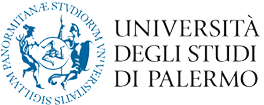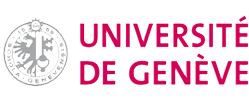Legislation in the Kingdom of France (13th-15th Centuries)
This chapter examines the royal legislative process in medieval France from the 13th to the 15th centuries. It explores the sources, structure, language, and content of royal acts, providing a methodological guide for understanding their historical and legal significance.
Accéder aux sources : les actes royaux (Accessing the Sources: Royal Acts)
The chapter opens with an overview of the primary sources for royal legislation. Royal acts (actes royaux), issued by the monarchy to regulate various aspects of governance, have been preserved in archives such as the Trésor des chartes. Collections like the Ordonnances des Rois de France provide scholars with access to these normative documents, which include ordinances, letters patent, and decrees. The chapter underscores the importance of these texts as evidence of the consolidation of royal power and the centralization of authority in France.
Se repérer dans la procédure législative médiévale (Navigating Medieval Legislative Procedure)
Medieval legislative processes were characterized by formalized procedures that evolved alongside the growth of royal administration. The chapter describes how royal acts were drafted, validated, and disseminated:
- Initiation: Legislation often began in response to petitions or identified administrative needs.
- Drafting: Legal advisors, such as the king’s councilors and chancery officials, played a central role in composing acts.
- Validation: Acts required the king’s approval, often formalized through seals.
- Promulgation: Royal acts were communicated to officials and subjects via public proclamation or written copies distributed to local authorities.
The procedural rigor reflects the growing institutionalization of royal power during this period.
Des mots pour dire l’acte normatif royal (Words to Describe the Royal Normative Act)
The chapter examines the terminology used in royal legislation, highlighting the precise language employed to convey authority. Terms like statut, ordonnance, and lettres patentes denoted different categories of royal acts, distinguished by their scope and legal purpose:
- Statut (Statute): General legislative measures.
- Ordonnance (Ordinance): Administrative acts regulating governance.
- Lettres patentes (Letters Patent): Public and sealed acts addressing specific subjects or individuals.
This vocabulary illustrates the monarchy’s effort to formalize and differentiate its legislative authority.
Identifier la mise en forme de l’acte (Identifying the Format of the Act)
The physical and structural presentation of royal acts reveals their legal and symbolic significance. Royal acts followed a standard format, which included:
- The Invocation: Addressing divine authority or the king’s legitimacy.
- The Preamble: Stating the rationale for the act and its objectives.
- The Dispositive Section: Detailing the legal norms or measures enacted.
- The Sanction: Establishing penalties for non-compliance.
- The Closing Formula: Validating the document’s authority, often sealed with the royal chancery’s mark.
The use of seals and parchment reflected the solemnity and authenticity of royal acts, ensuring their acceptance across the kingdom.
Considérer le contenu de l’acte (Considering the Content of the Act)
Royal acts addressed a wide range of subjects, reflecting the monarchy’s expanding legislative scope. Key areas of regulation included:
- Justice: Establishing procedures for courts and defining criminal and civil law.
- Finance: Regulating taxation and royal revenues.
- Defense: Organizing military obligations and fortifications.
- Social Order: Enacting measures to maintain public order and resolve disputes.
The content of royal legislation reveals the monarchy’s pragmatic responses to societal challenges, as well as its ambition to standardize legal norms across the realm.
The chapter concludes by reflecting on the methodological challenges of studying royal acts. It emphasizes the need to consider both their formal structure and practical application, balancing textual analysis with historical context. By examining royal acts as instruments of governance, scholars gain insights into the evolution of royal authority, legislative practices, and the growing role of written law in medieval France.







